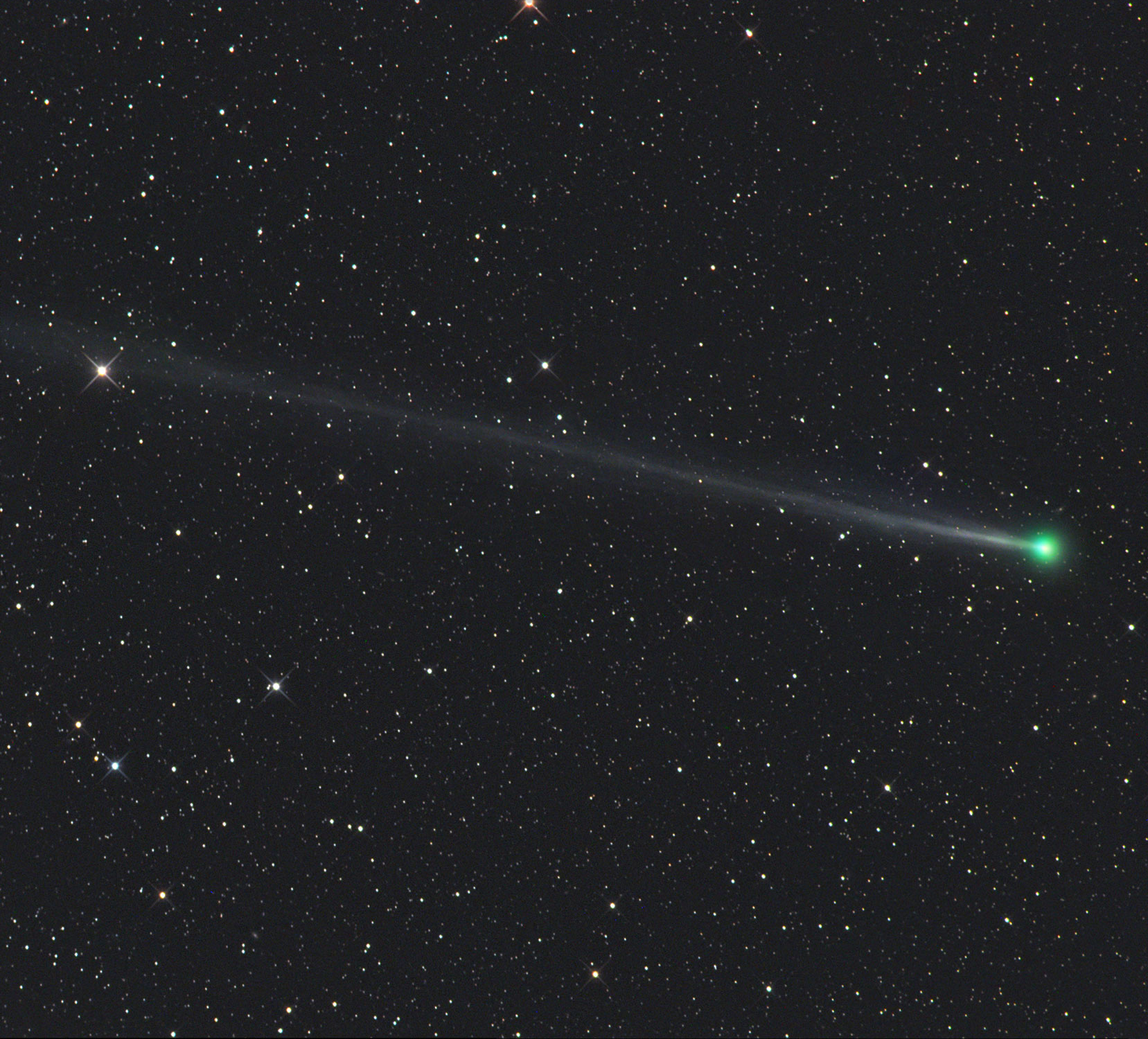Did You Miss the Green Comet? Mark Your Calendar for These Upcoming Flybys
If you missed out on spotting the green comet that zoomed past Earth over the weekend, don't worry — Comet 45P was only the first of three comets to pass near Earth between now and the end of 2018.
Comet 45P/Honda-Mrkos-Pajdušáková made its closest approach early Saturday morning (Feb. 11) at about 3 a.m. EST (0800 GMT), when it passed within just 7.4 million miles (12 million kilometers) of Earth. The sight of the comet, which was visible with binoculars or a telescope, coincided with the Snow Moon penumbral lunar eclipse on Friday night.
While this weekend's encounter was the comet's closest approach yet, it is expected to make another pass by the planet in 2032 — but at a much farther distance of nearly 30 million miles (about 48 million km). Nonetheless, a second flyby of Comet 45P offers a unique opportunity for astronomers to observe how the comet and the gases, dust and ice particles it releases into space change over time, NASA officials said in a statement. [In Photos: The Snow Moon Eclipse & Comet 45P]

"Observing a comet multiple times over successive orbits is like taking snapshots at different stages of life," Joseph Nuth, a senior scientist at NASA's Goddard Space Flight Center, said in the statement. "And some comets have harder lives than others, depending on how close they get to the sun. We can learn about these effects by comparing different comets with varying perihelion distances over time." (Perihelion refers to the point in the comet's orbit when it's closest to the sun.)
In the nearer future, Comet 41P/Tuttle-Giacobini-Kresak will fly by Earth on April 1, 2017, followed by Comet 46P/Wirtanen on Dec. 16, 2018. Astronomers can learn more about Comets 45P, 41P and 46P by studying the differences between them, NASA officials said.
"Comet 46P, in particular, will remain within 10 million miles [16 million km] of Earth for several weeks, from December 4 through 28, 2018," Michael DiSanti, a researcher at the Goddard Space Flight Center, said in the statement. "This will permit detailed studies of its material, as successive regions of the comet's nucleus become exposed to sunlight."
Comet 45P will still be visible through telescopes or binoculars for a few more days as it travels away from Earth and farther out into space. You can see more photos of the beautiful comet flyby (and the penumbral eclipse) on Space.com.
Get the Space.com Newsletter
Breaking space news, the latest updates on rocket launches, skywatching events and more!
Follow Samantha Mathewson @Sam_Ashley13. Follow us @Spacedotcom, Facebook and Google+. Original article on Space.com.
Join our Space Forums to keep talking space on the latest missions, night sky and more! And if you have a news tip, correction or comment, let us know at: community@space.com.

Samantha Mathewson joined Space.com as an intern in the summer of 2016. She received a B.A. in Journalism and Environmental Science at the University of New Haven, in Connecticut. Previously, her work has been published in Nature World News. When not writing or reading about science, Samantha enjoys traveling to new places and taking photos! You can follow her on Twitter @Sam_Ashley13.









